- Learning time
- 90 minutes
- First play time
- 180 minutes
Great Western Trail
Designed by: Alexander Pfister
In Great Western Trail you are competing ranchers, raising money by driving your cattle across the ranges to Kansas City, where you load them onto trains for delivery. But it’s not all about looking at the rear-end of a cow – you also have the opportunity to construct buildings on the route, remove hazards, and trade with the Native Americans.
The board shows the various routes you can take across country, along with a few other elements such as the railroad and the cities it travels to. Your rancher begins bottom right of the board, at the start of their journey. In front of you you’ll have an individual player board that keeps track of how many workers you have (cowboys help with cattle, craftsmen with construction, and engineers with shifting your train) and how productive your auxiliary actions are. More on those in a moment. Each player also has a deck of cattle cards – they shuffle them and deal themselves a hand of four.
On your turn you simply move your rancher along the trail – at least one step, but potentially up to three or more. The ‘steps’ are the buildings or hazards en route – the game begins with seven buildings, but more will be added. Then, when you stop at a building, you get to take the actions it allows: if the building is either built by you, or one of the grey ‘neutral’ buildings, you can take the local or auxiliary actions. If it belongs to another player, you may only take the auxiliary action.
So – what are the actions? Well, the game is about getting to Kansas with a valuable stock of cows, so many of them involve ways to make sure that your hand of cattle cards is in good shape when you arrive. You can discard cards for money, or hire workers, or remove hazards from the various routes, or trade… there’s a fair few options and we can’t really cover them all here. Some moves will be better than others, but there’s no ‘wrong’ one. The auxiliary actions are shown on your own board, and vary from gaining a little income to drawing cattle cards to moving a train, and more.
When you reach Kansas, you reveal your hand to the players and are paid money for each type of cattle you have – duplicates don’t earn you anything. You then deliver the cows via the railroad, and place a disc from your player board on the crest next to it. Clearing the discs this way improves your auxiliary actions! Once you’ve delivered to a city, you cannot deliver there again, and the further your train goes, the better you’ll do when points are totted up at the game end. Having delivered the cattle, your rancher returns to the start of the trail, and the process begins again! After every turn you replenish your hand of cattle cards, and when you run out of cards your discards are shuffled and form the new draw pile.
This continues for several rounds until the game end is triggered (when there is no more room for workers on the job market). Points are scored in a huge variety of ways – see the shields on your cattle cards, buildings, cities delivered to, hazards removed, and more. There are objective cards you can pick up during the game which reward you for moving hazards or trading and building…. GWT has a lot going on and we have barely skimmed the surface here!
Joe says
At the heart of Great Western Trail is a neat deck-building idea - draw four cattle cards from your deck, and on the way to market use the various opportunities on hand to buy better cards for next time, and switch out cards until you have the highest scoring cards you can get. Around this core is piled so much 'other stuff' that I chuckled while Sam explained the rules - it came across to me like the product of a deranged mind. This sort of game makes me think of the designer as a grandstanding chef - adding more and more flavours and influences to a dish to the point where you risk obscuring the pleasure of eating entirely. But somehow, against the odds, it does gel, and ends up being a very satisfying meal.
The guru's verdict
-
Take That!
Take That!
Not much. As the game continues, the board fills up with buildings, and as each one counts as a 'step' they can start to get in your way. But there's no combat, no stealing of cards or rustling of cattle.
-
Fidget Factor!
Fidget Factor!
High on a first play, dropping to surprisingly low. The array of bewildering iconography starts to make sense after a while, and when it does Great Western Trail turns into a rather fast-moving game.
-
Brain Burn!
Brain Burn!
There are a lot of options, but there's no secret key to victory. Almost everything scores you points, so it's a rather tactical game of maximising your actions and trying to avoid turns where you get stuck at an opponents' building.
-
Again Again!
Again Again!
There's huge variety here. The neutral buildings are always the same, but they are placed randomly. The hazards and workers are also random. The players own buildings are double-sided and can be dealt randomly too (just make sure each player is playing with the same set)

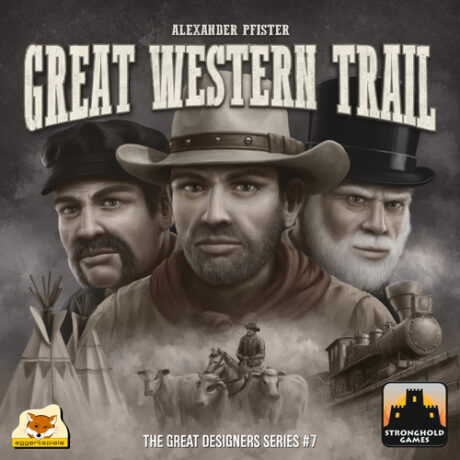
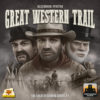

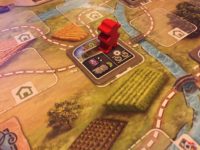

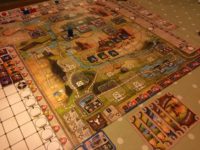



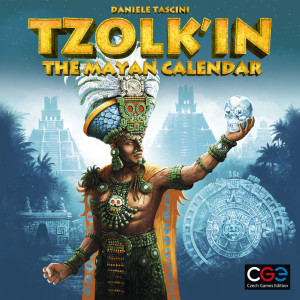
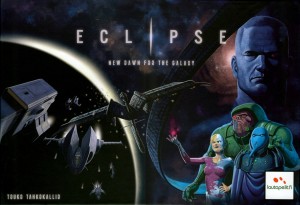
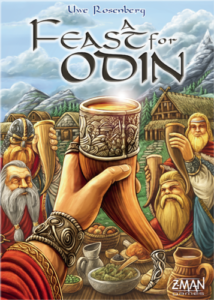
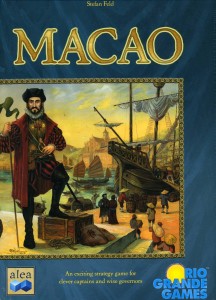

Sam says
The rulebook requires a couple of strong cups of coffee, but I think it's really worth it because the heart of the game is simple; it just has some rather idiosyncratic stuff going on around it. Some elements of the game don't make a whole lot of sense, thematically - you can trade a cowboy for a station master, or get money because your buildings are next to some trees - and some people won't be crazy about the scoring system, where almost everything scores points (I quite like the mystery of that, where you can't be sure who's won until the final reckoning). But once you've pushed out the other side of that first-play-bump, GWT is a really speedy game and there's a nice sense that everything you do is productive. But it's about being the most productive in order to win...